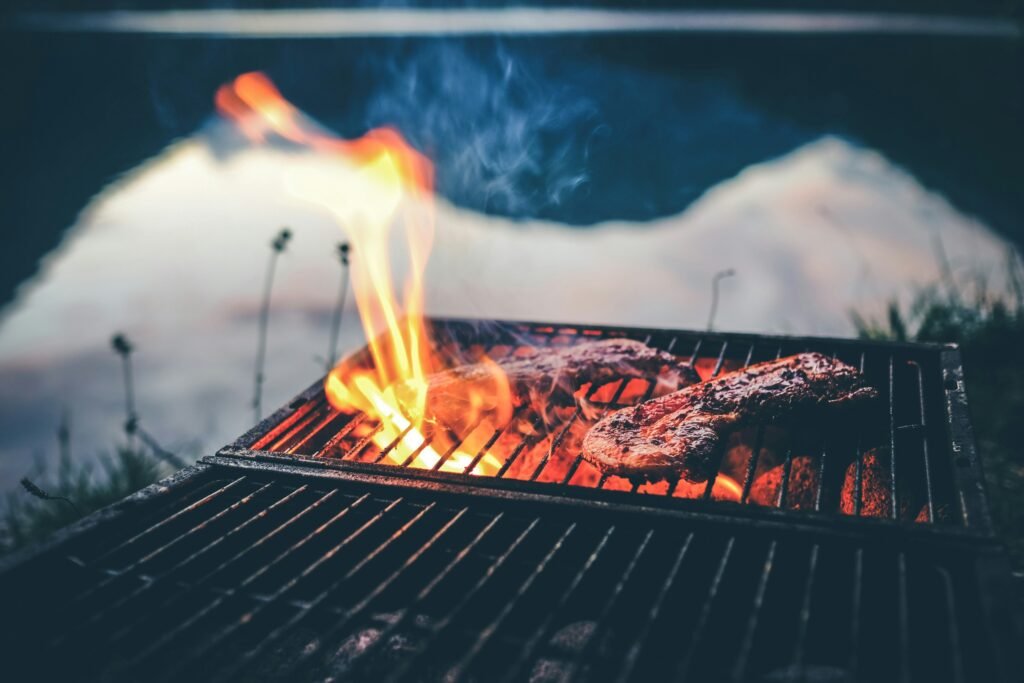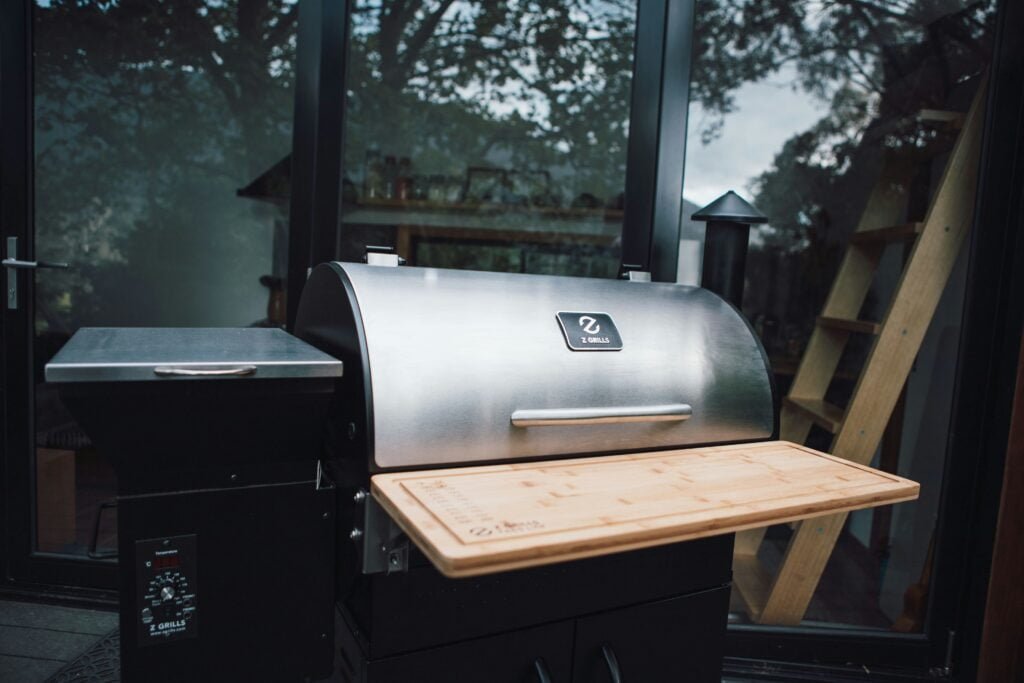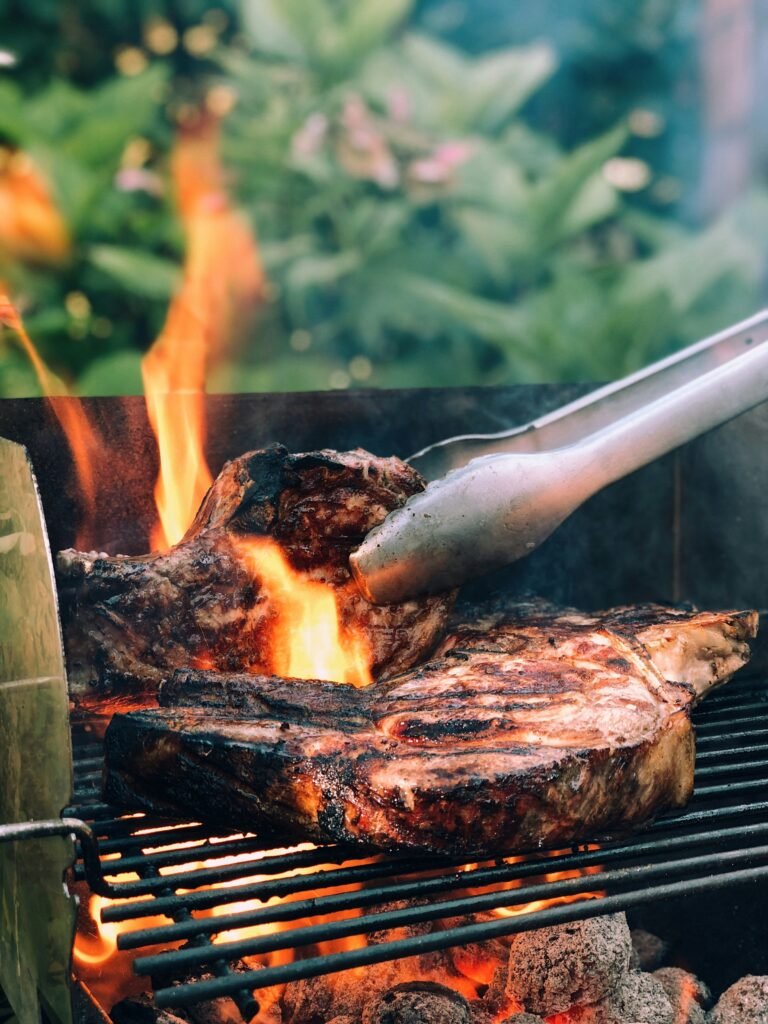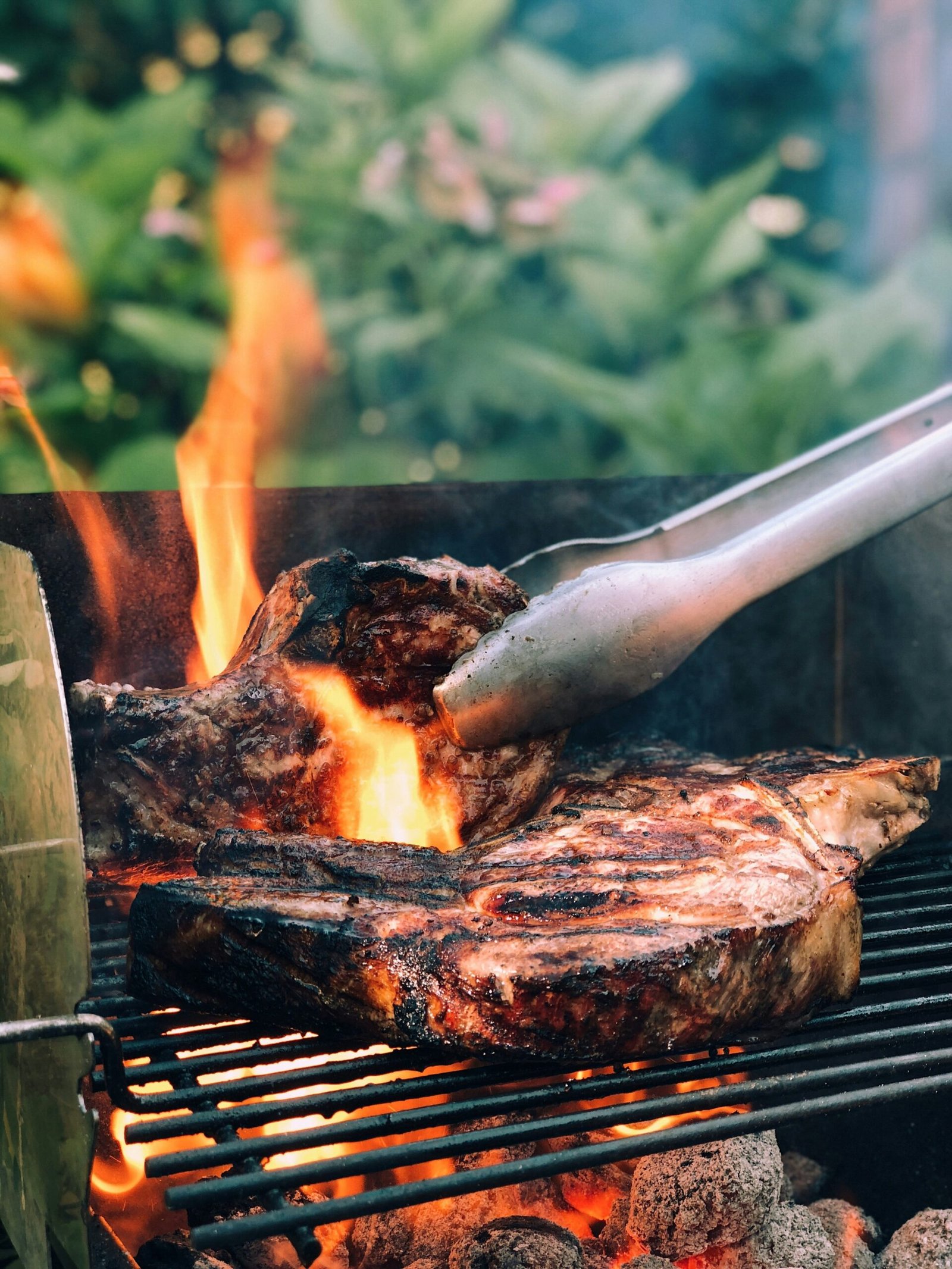Imagine sitting outside on a sunny day, surrounded by the mouthwatering aroma of sizzling meat. As you take a bite of your perfectly tender and smoky brisket, you can’t help but wonder, “How does a smoker grill work?” Well, get ready to be amazed as we unravel the secrets behind this culinary marvel. From the slow and low cooking method to the infusion of smoky flavors, a smoker grill is the ultimate tool for achieving that delicious smoky goodness in your favorite grilled dishes. So grab your tongs and let’s dive into the fascinating world of smoker grills.
Understanding the basic concept of smoking
Difference between grilling and smoking
When it comes to cooking meat, grilling and smoking are two popular techniques that offer distinct flavors and cooking methods. The main difference between grilling and smoking lies in the heat source and the cooking times. Grilling usually involves cooking meat over direct heat at high temperatures, resulting in a quick sear and a moist interior. On the other hand, smoking is a slow and low-temperature cooking method that uses indirect heat and smoke to infuse flavors into the meat, resulting in tender and flavorful dishes.
Principle behind smoking meat
The principle behind smoking meat is simple yet effective. As the smoke from burning wood circulates around the meat, it imparts a rich and smoky flavor. The low and steady heat of the smoker grill slowly breaks down the connective tissues in the meat, resulting in tender and juicy results. The process of smoking not only cooks the meat but also adds unique flavors, making it a favorite cooking method among barbecue enthusiasts.
Why is smoking used for cooking meat
Smoking is used for cooking meat because it offers a range of benefits that enhance the taste and texture of the food. Firstly, smoking imparts a distinct smoky flavor to the meat, adding depth and complexity to the overall taste. Additionally, the slow and low-temperature cooking of smoking helps to retain moisture in the meat, resulting in succulent and tender dishes. Moreover, smoking allows for the breakdown of tough connective tissues, making the meat more tender and easier to chew. Lastly, smoking also acts as a natural preservative, extending the shelf life of the cooked meat.
Components of a smoker grill
Firebox: source of heat
The firebox is a crucial component of a smoker grill as it provides the source of heat. Typically located on the side or at the bottom of the smoker, the firebox is where the fuel, like wood or charcoal, is burned to create heat and smoke. The firebox is designed in a way that allows for easy access to add more fuel when needed.
Smoking chamber: where the cooking happens
The smoking chamber is where the magic happens. It is the main cooking area of the smoker grill, where the meat is placed and cooked slowly with indirect heat and smoke. The smoking chamber is designed to retain heat and allow the smoke to circulate evenly around the meat, enhancing the flavors and ensuring even cooking.
Water pan: keeps the meat moist
The water pan plays a vital role in maintaining the moisture levels during the smoking process. Placed above or under the source of heat, the water pan helps to regulate the temperature inside the smoking chamber. As the water in the pan evaporates, it creates a humid environment that prevents the meat from drying out, resulting in juicy and flavorful dishes.
Vents: control the flow of oxygen
Vents are strategically placed openings in the smoker grill that control the flow of oxygen. By adjusting the vents, the level of heat and the intensity of the smoke can be regulated. Opening the vents allows for increased airflow and higher temperatures, while closing them restricts the oxygen supply, resulting in lower temperatures.
Thermometer: monitors the temperature
A thermometer is an essential tool for any smoker grill. It helps you monitor and maintain the desired cooking temperatures. The thermometer can be built-in or attached externally to the smoker grill, providing a precise reading of the internal temperature of the smoking chamber. This allows for accurate cooking and ensures that the meat reaches the desired level of doneness.

Types of smoker grills
Offset smokers
Offset smokers, also known as barrel smokers, are a popular choice for backyard smoking enthusiasts. These smokers consist of a main chamber for cooking, which is placed offset from the firebox. This design allows for indirect heat cooking, as the smoke and heat generated in the firebox flow into the cooking chamber. Offset smokers are versatile and provide excellent temperature control, making them a favorite among serious barbecue enthusiasts.
Vertical water smokers
Vertical water smokers, also known as bullet smokers or drum smokers, have a unique vertical design that allows for efficient smoking. These smokers feature a firebox at the bottom and a series of stacked chambers above it. The water pan is placed between the firebox and the cooking chamber to maintain moisture. Vertical water smokers are compact, easy to use, and ideal for beginners. They offer good temperature control and are suitable for smoking smaller cuts of meat.
Box smokers
Box smokers, also known as cabinet smokers, have a box-like design with separate compartments for the firebox and the cooking chamber. The firebox is located at the bottom, with the smoke and heat traveling into the cooking chamber through a chimney or vent. Box smokers provide excellent insulation and heat retention, making them ideal for long smoking sessions. They offer good temperature control and can accommodate larger cuts of meat.
Drum smokers
Drum smokers, also known as Ugly Drum Smokers (UDS), are simple yet highly effective smokers. Made from repurposed drums, these smokers have a cylindrical design with the firebox at the bottom and the cooking chamber on top. The heat and smoke travel through intake vents at the bottom and exhaust vents at the top, creating a convection heat flow. Drum smokers are affordable, easy to use, and offer excellent temperature control.
Pellet smokers
Pellet smokers, also known as pellet grills, are a modern and convenient option for smoking meat. They use wood pellets as a fuel source, which are fed into a hopper and automatically ignited by an electric controller. Pellet smokers offer precise temperature control, allowing you to set and maintain the desired cooking temperature. They are versatile, user-friendly, and provide a consistent smoke flavor.
The smoking process
Firing up the smoker
Before you begin smoking, it’s important to properly fire up your smoker grill. Depending on the type of smoker grill you are using, you would need to add the appropriate fuel source, such as hardwood logs, charcoal, pellets, or gas. Ensure that the firebox is well-ventilated and ignite the fuel according to the manufacturer’s instructions. As the fuel starts to burn, preheat the smoking chamber to the desired temperature.
Regulating smoker temperature
Regulating the temperature is crucial during the smoking process to ensure that the meat cooks evenly and reaches the desired level of doneness. Adjust the vents and damper settings on your smoker grill to control the flow of oxygen and airflow. Opening the vents allows for increased oxygen supply, which results in higher temperatures, while closing them reduces the oxygen supply, leading to lower temperatures. Monitor the temperature using a thermometer and make adjustments as necessary.
Adding smoke wood
Smoke wood is added to the firebox or dedicated wood chip box to create the smoky flavor that makes smoked meat irresistible. The type of wood you choose will impact the taste and aroma of the final dish. Commonly used types of smoke wood include hickory, mesquite, apple, cherry, and oak. Soak the wood chips or chunks in water for about 30 minutes before adding them to the smoker. This helps to create a steady smoke and prevents the wood from burning too quickly.
Monitoring the smoke and temperature
Throughout the smoking process, it is essential to monitor both the smoke and the temperature inside the smoking chamber. The smoke should be a thin and almost invisible blue smoke, indicating that the wood is burning cleanly and providing a subtle smoky flavor. If the smoke appears thick and white, it can result in an acrid and bitter taste. Additionally, ensure that the temperature remains consistent within the desired range by adjusting the vents and adding fuel as needed.

Effect of temperature on smoking
Ideal smoking temperature
The ideal smoking temperature typically ranges between 225°F and 275°F (107°C and 135°C). This temperature range allows for the slow cooking of the meat, ensuring tenderness and allowing the flavors to develop. Lower temperatures can result in a longer cooking time, while higher temperatures may result in uneven cooking and a less desirable texture. It’s important to find the sweet spot within this range that works best for the specific meat you are smoking.
Effects of high temperature
Cooking meat at high temperatures can have some undesirable effects on the final result. High temperatures can cause the meat to dry out quickly, resulting in a tough and chewy texture. Additionally, cooking at high temperatures can lead to uneven cooking, where the exterior of the meat becomes overcooked while the interior remains undercooked. It’s important to maintain the ideal smoking temperature to ensure the best outcome and avoid these issues.
Effects of low temperature
While low temperatures are ideal for smoking, excessively low temperatures can prolong the cooking time significantly. This can result in overly tender meat that falls apart or lacks a desirable texture. Moreover, extremely low temperatures may not kill bacteria or pathogens in the meat, posing a food safety risk. It’s crucial to maintain the appropriate smoking temperature to ensure both safety and quality in the final product.
Choice of fuel for smoker grills
Hardwood logs
Hardwood logs, such as oak, hickory, or mesquite, are a traditional and popular choice for fueling smoker grills. They provide a rich and distinct smoky flavor and can generate a steady heat source. Hardwood logs require proper seasoning and may take longer to reach their optimal burn temperature, but they offer an authentic smoking experience and allow for experimentation with different wood flavors.
Charcoal
Charcoal briquettes or lump charcoal are widely used as fuel in smoker grills. Charcoal provides a consistent and reliable source of heat and burns cleaner than wood. It is easy to ignite and maintain, making it a popular choice for beginners. While charcoal doesn’t impart as much smoky flavor as wood, it still contributes to the overall taste of the smoked meat. Some charcoal varieties are infused with wood chips to enhance the smoky flavor.
Pellets
Wood pellets have gained popularity in recent years as a convenient and efficient fuel source for smoker grills. Made from compressed sawdust and wood chips, pellets offer a consistent burn and precise temperature control. They come in a variety of wood flavors, allowing you to experiment with different smoky profiles. Pellets are easy to use, produce minimal ash, and can be easily fed into pellet smoker grills through an automated hopper.
Gas
Gas smokers use propane or natural gas as a fuel source, providing convenience and ease of use. Gas smokers offer precise temperature control and quick heating, making them ideal for those who want a hassle-free smoking experience. While gas smokers may not provide the same level of authentic smoky flavor as wood or charcoal, they are an excellent option for beginners or those with limited time.

The role of wood in smoking
Different types of wood
Choosing the right type of wood for smoking is essential, as it significantly impacts the flavor profile of the final dish. There is a wide variety of wood types available, each with its own distinct characteristics. Common types of smoking wood include hickory, mesquite, apple, cherry, pecan, oak, and maple. It’s important to experiment with different woods to find the flavors that complement the specific meat you are smoking.
Flavor profiles of various woods
Different types of wood impart unique flavors to the smoked meat. Hickory, known for its strong and bold flavor, is popularly used for pork and beef. Mesquite, with its intense and earthy taste, is a favorite for grilling and smoking Texas-style barbecue. Fruitwoods like apple and cherry offer a mild and fruity flavor, ideal for poultry and pork. Pecan wood provides a slightly sweet and nutty taste, while oak and maple offer a milder and more subtle smoky flavor.
How to prep wood for smoking
To ensure the best results when using wood for smoking, it’s important to properly prep the wood. If using hardwood logs, it is essential to season the wood by allowing it to dry for several months. Seasoned wood burns more efficiently and imparts a better flavor to the meat. For other types of wood like chips or chunks, soaking them in water for about 30 minutes before using prevents them from burning too quickly and creates a steadier smoke.
Tips for managing smoke
Using clean smoke
Clean smoke is crucial for achieving the desired flavors in smoked meats. Clean smoke is thin and almost invisible, while dirty or billowing smoke can result in an unpleasant taste. To ensure clean smoke, avoid using green or unseasoned wood, as it produces heavier and acrid smoke. Additionally, using quality wood chips or chunks and properly managing the airflow and temperature in the smoker grill can help maintain clean smoke throughout the smoking process.
White smoke vs. blue smoke
Understanding the difference between white smoke and blue smoke is important for achieving optimal results in smoking. White smoke, which is thick and billowing, indicates that the fuel is not burning cleanly and can result in a bitter taste. On the other hand, blue smoke is thin and almost invisible, indicating a clean burn and a more desirable flavor. Aim for blue smoke throughout the smoking process to ensure the best results.
How to avoid over-smoking
Over-smoking can result in an overwhelming or bitter taste in the smoked meat. To avoid this, it’s crucial to use the right amount of smoke wood and maintain the appropriate smoking temperature. Too much smoke wood can lead to an excessive amount of smoke, overpowering the flavors and potentially causing a bitter taste. Additionally, be mindful of the cooking time and the type of meat being smoked, as different cuts require varying amounts of smoke exposure.
Common issues with smoker grills and solutions
Fire management issues
One common issue with smoker grills is difficulties in managing the fire. If the fire is too hot, try reducing the airflow by partially closing the vents and adjusting the fuel source. Adding less fuel or using smaller wood chips can also help to lower the temperature. If the fire is too weak or dying out, add more fuel and increase the airflow by opening the vents wider. It may take some trial and error to find the right balance, but with practice, you’ll become more adept at managing the fire.
Temperature control troubles
Maintaining a consistent temperature in the smoking chamber can be challenging, especially in adverse weather conditions. To improve temperature control, ensure a tight seal between the smoking chamber and the lid or door. Use high-quality insulation materials and gaskets to prevent heat loss. Additionally, monitor the temperature closely using a reliable thermometer and make slight adjustments to the vents as needed to regulate the airflow and heat.
Inconsistent smoke flow
Inconsistent smoke flow can lead to uneven flavors and cooking results. To address this issue, ensure that the smoke can travel freely from the firebox to the cooking chamber by checking for any obstructions or blockages. Position the meat properly within the smoking chamber to allow for equal smoke exposure. Additionally, maintaining a steady temperature and using the appropriate amount of smoke wood can help achieve a consistent smoke flow.
Fixing leaks
Leaky smoker grills can result in heat loss and difficulties in maintaining a consistent temperature. Check for any gaps or leaks in the smoking chamber, firebox, or doors. Use high-temperature silicone or gaskets to seal any gaps and ensure a tight fit. Proper insulation and sealing can help prevent heat loss and improve temperature control, leading to better cooking results.
Proper maintenance of a smoker grill
Regular cleaning: avoiding buildup
Regular cleaning is essential to ensure optimal performance and longevity of your smoker grill. After each use, remove any ash or debris from the firebox and the cooking chamber. Clean the grates and surfaces with a grill brush or scraper. Avoid using harsh chemicals or abrasive materials that can damage the smoker grill. Regular cleaning prevents the buildup of grease and residue, which can affect the taste of the smoked meat and pose a fire hazard.
Checking for rust and damage
Periodically inspect your smoker grill for any signs of rust or damage. Rust can affect the structural integrity of the smoker and compromise its performance. Remove any rust spots using a wire brush or sandpaper and apply heat-resistant paint or a suitable sealant to prevent further corrosion. Additionally, check for any loose or damaged parts and replace or repair them as necessary to maintain the effectiveness of your smoker grill.
Seasoning a smoker grill
Seasoning a smoker grill is an essential step in preparing it for use and improving its performance. Before the first use, coat the grates, interior surfaces, and any exposed metal with a thin layer of cooking oil. This helps to create a non-stick surface and prevents rust. Heat the smoker grill to a high temperature, usually around 400°F (205°C), and maintain it for 2-3 hours. This process allows the oil to polymerize and form a protective layer, enhancing the flavor of future dishes and protecting the metal surfaces. Regular seasoning can be done periodically to maintain the protective coating.
In conclusion, understanding the basic concept of smoking and the components of a smoker grill is the first step towards mastering the art of smoked meats. Different types of smoker grills offer various features and cooking methods, allowing for versatility and customization in the smoking process. With proper temperature control, selection of fuel and smoke wood, and attention to smoke management, you can create delicious and tender smoked dishes. Regular maintenance and cleaning of your smoker grill ensure its optimal performance and prolong its lifespan. So fire up your smoker grill, experiment with different flavors, and enjoy the wonderful world of smoking meats!

